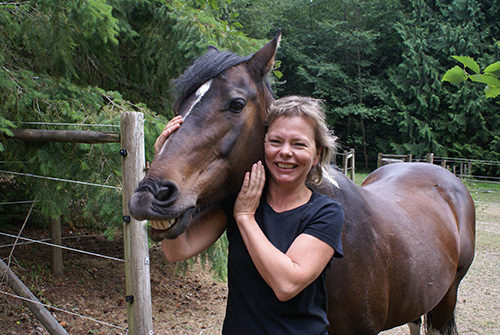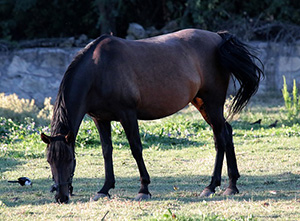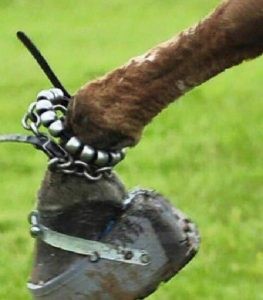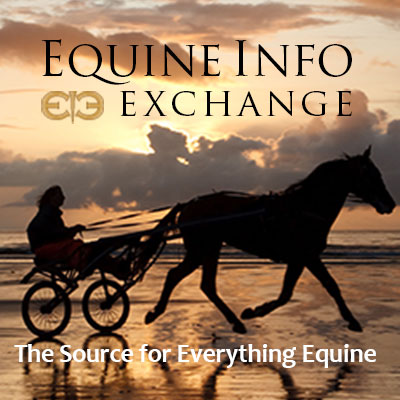Health & Education
We all want the best care possible for our horses. The Heath & Education section covers both Learning Institutions, Organizations as well as many sources for equine assistance including Veterinarians and Farriers.
For those who want a to formally study horses, the Education section includes College Riding, Equine Studies, and Veterinary Schools. Learn about the wide variety of horses in the Horse Breeds section. Supplements and Treatments Therapy are also included in the section.
Everyone can learn from Fine Art and there are some specialty Museums that might surprise you.
Horses as a therapy partner enrich the lives of the disabled. These facilities are listed in our Therapeutic Riding section. To help children and young adults build confidence and grow emotionally, please see the resources available on the Youth Outreach page.
Looking for a place to keep your horse? You can find it in the Horse Boarding section. Traveling? Find a Shipping company or Horse Sitting service if your horse is staying home!
Want to stay up to date with the latest training clinics or professional conferences? Take a look at our Calendar of Events for Health & Education for the dates and locations of upcoming events.
Do we need to add more? Please use the useful feedback link and let us know!

From the UC Davis Veterinary Genetics Laboratory
New research has reported the warmblood fragile foal syndrome (WFFS) allele in 21 breeds. The study, an international collaboration led by UC Davis Veterinary Genetics Laboratory Director Rebecca Bellone, screened more than 4,000 horses from 38 different horse breeds in the United States and Europe.
Affected breeds were mainly warmbloods, with the highest carrier frequencies (17%) observed in Hanoverians and Danish Warmbloods. The allele was not detected in two warmblood breeds, the Swedish Warmblood and Zangersheide Warmblood, but sample sizes for both breeds in this study were small (16 and 10, respectively). The average WFFS carrier frequency across all warmbloods tested was 11%. Non-warmblood breeds included Haflinger, American Sport Pony, and Knabstrupper. The WFFS allele had previously been reported at a low frequency in Thoroughbreds (2.4% carrier frequency in 716 Thoroughbreds tested).
The study also investigated the long standing hypothesis that the mutation originated in the Arabian breed, specifically with the stallion Bairactar Or. Ar., based on a similar disease that was reported in the 19th century. DNA from a museum sample from the stallion did not contain the WFFS allele. Further testing in 300 Arabians did not support an Arabian origin for this disease. The origin of the WFFS allele remains unknown.
Warmblood fragile foal syndrome is an inherited defect of connective tissue characterized by hyperextensible, abnormally thin, fragile skin and mucous membranes that are subject to open lesions. The disease is present at birth and affected foals are euthanized shortly after birth due to the poor prognosis of this untreatable condition.

by Juliet M. Getty, Ph.D.
Your horse has an ulcer? “Give him omeprazole.”
Your horse is traveling on a long trip? “Give him omeprazole.”
Your horse is taking pain medication? “Give him omeprazole.”
Sound familiar?
Omeprazole, produced by Merial as GastroGard® and the less concentrated UlcerGard®, is the go-to drug for all these reasons and more. One of my clients recently said, “The people at my barn feed omeprazole like it’s candy!”
Does omeprazole have any benefits?
Yes, particularly for ulcers that are found in the upper squamous region of the stomach that is not protected by a mucus layer. Short term usage is usually not problematic as long as care is taken to wean the horse off of it, lest there be a rebound acid effect.
But usage beyond 4 weeks, or giving your horse omeprazole for other reasons, is not a good idea. Firstly, it almost completely eliminates stomach acid. Stomach acid should not be treated as a nuisance and removed! It is absolutely necessary for protein digestion. Without it, your horse can experience protein deficits, which can result in loss of muscle, depressed immune function, poor digestion, and hormonal imbalances.
In addition, stomach acid is your horse’s first line of defense against damaging microbes that he may pick up off the ground.
Furthermore, omeprazole inhibits calcium and magnesium absorption, as well as other minerals, potentially damaging metabolic pathways and bone health.
But there is a better way
Read more: Veterinarians are Considering Lecithin for Treating and Preventing Ulcers

By Kevin Hankins, Senior Veterinarian, Equine Technical Services, Zoetis
Unvaccinated horses face a fatality rate of 75%
All horses are at risk for being exposed to tetanus. If your horse has exposure to soil, other animals and manure, he is at risk. Tetanus is easily transmitted, and if contracted, can be devastating to horses, with a fatality rate of 75%.1
What is tetanus?
Tetanus is a bacterial disease caused by the invasion of Clostridium tetani in puncture wounds, open lacerations, exposed tissues or surgical incisions. Present in the intestinal tract and feces of horses, other animals and humans, the bacteria can be abundant in soil and can survive in the environment for years, creating a constant risk for horses and people. Clinical signs begin with hyperresponsiveness to noise or movement and progress to a horse having erect ears, third eyelid prolapse, flared nostrils, elevated head, stiff or erect tail, and a stiff-legged gait. Symptoms can advance to muscle spasms, convulsions and death by asphyxia.
“I’ve recently seen tetanus cases in a few horses, and it is devastating to lose a horse from a disease that is very preventable,” said Leslie Schur, DVM, Desert Pines Equine. “Whether you have a young foal, a recently purchased horse or a horse with an unknown vaccination history or a horse that isn’t current on their annual vaccinations, their risks for contracting tetanus significantly increase.”
It is crucial to work closely with your veterinarian to ensure your horse has received protection against tetanus.
Read more: Tetanus: Your Horse’s Risk May Be Greater Than You Think

by Eleanor M. Kellon, VMD
Equines with uncontrolled Primary Pars Intermedia Dysfunction (PPID) are often more prone to high parasite burdens related to immunosuppression from the disease, so diligent deworming — and control of ACTH — is essential. The fecal egg count (FEC) has become the method of choice for determining when to deworm a horse but there are many shortcomings.
Most labs do simple flotations, which means manure is mixed with a concentrated sugar or salt solution then allowed to sit. The eggs will float up and attach to a microscope slide at the top of the container.
The first problem with FECs is they were designed to reduce contamination of the environment, not to make sure the individual is parasite free. Eggs passed in the feces is how parasites spread from horse to horse. However, only adults pass eggs so you know nothing about other life stages, or parasites not laying eggs, or eggs not mixed evenly into the manure.
Any of the following can be undetectable or easily missed:
- Immature or tissue forms of parasites
- Tapeworms
- Bots
- Pinworms

Carole Herder, President of Cavallo Horse & Rider, shares her thoughts.
Q: Carole, you often talk about leaning on your horses during times of stress. The constant news about COVID has me worried and downright fatigued. What’s the best way that you have found for horses to help during this ongoing pandemic?
A: Horses provide a quiet connection to nature and help us all connect and quiet our minds. We live in the country and enjoy a rural setting. We all have our animals to keep us from feeling too much isolation.
They are often the best companions anyway. During this time of pandemic, people are out riding their horses, and they are calling us for advice about how to keep their horses moving and feeling great.
Pandemic Panic
Unfortunately, not everyone is doing as well. For example, my neighbor is negatively affected by this pandemic. By the news, the fear, and the anxiety around COVID. She's not alone. Constantly judging the correct distancing and checking to see whether people are wearing masks has many people upset.
These folks are placing their frame-of-reference on the external forces around them and forgetting to nurture their own internal states. They're letting the news run the show. My friend has a hard time looking inward and is continuously being distracted by the media.
She lost her horses last year, and I now see how important they were to her happiness. They helped her focus, be quiet and connect with nature. That's what horses do.

The pregnant mare has the same basic needs for water, nutrients and exercise, but with different targets.
The calories are the easy part. If you have a good quality hay (DE at least 0.9 Mcal/lb on hay analysis) she will need to eat only about 19 lb of hay/day in her 5th month, up to 24 lbs in the last month if her prepregnancy weight was 1100 lbs - and proportionately less or more if she is below or above that weight. This is definitely a reasonable consumption. If she won't eat that much, supplement her with a balanced commercial feed at the rate of 1 lb of feed for every 2.5 lbs of hay below her target intake.
Protein may be more problematic. She can still meet protein needs if the hay is at least 11% protein. This is possible but by no means guaranteed. If your hay is 8% protein instead of 11%, it is lacking 14 grams of protein per pound. For 20 lbs of hay that's about 280 g of protein.
If you are feeding grain instead of hay for part of the ration, there is also a protein deficiency. One pound of grain = approximately the calories of 2.5 pounds of hay. If the grain is 14% protein it supplies 64 g of protein. Even an 8% protein hay yields 91 g of protein in 2.5 pounds and at 11% it is 125 g compared to the 64 g in the grain.
The body makes proteins by stringing together amino acids. Essential amino acids are those that need to be adequate in the diet because the horse cannot make them. Lysine is the most important in pregnancy and supplementing at least 10 g/day is advisable, either as part of a protein supplement or separately if not supplementing protein.

State Line Tack® is proud to bring you the inside scoop on riding programs that are working hard to bring access to horses to kids of all ages. This month's spotlight is on Ebony Horsewomen.
What is Ebony Horsewomen?
Founded by Patricia E. Kelly in 1984, Ebony Horsewomen, Inc. was initially conceived as a cultural enrichment organization. Made up of African American female equestrians who operated community programs and rode in rodeos, EHI has morphed over the years into a comprehensive equine educational and therapy program.
A Grocer and a Horse and Wagon
In the early 1950s, Patricia’s parents moved to a new neighborhood. There, their neighbor was a Jewish grocer who owned a horse and wagon for his business. Mr. Fisher, the grocer, allowed Patricia to groom and ride the horse until its unfortunate death 2 years later in a fire.
However, this short timespan was long enough to ingrain her desire for the equestrian lifestyle. Growing up as a horse crazy youth, many people thought it strange for a colored girl
to fancy herself a cowgirl, with no visible representation to inspire her to it.
Marine Corps, a Men’s Group and New Beginnings:
Patricia joined the USMC after high school, and after she left the Corps, she yearned to rejoin the equestrian community. She connected with a men’s group in Hartford, CT - the Ebony Horsemen - a noted and long-standing group of African American horsemen.
Based on her experience with that group, Patricia and her youngest daughter organized the Ebony Horsewomen, which immediately started attracting skilled equestrians from Alaska to Maine, women who appeared in parades, rodeos, and horse shows all across America.
They became the first African American all-female equestrian organization to be invited to participate in the Tournament of Roses Parade in 1990, and the State of Connecticut Legislature proclaimed them as Goodwill Ambassadors.
Read more: Equestrian Diversity Project Spotlight: Ebony Horsewomen
This video is Part 1 of a 3-part series that takes viewers on a journey through the horse’s digestive tract. Parts 2 and 3 will be released in Equine Guelph’s monthly communications in November and December. You can sign up here: https://www.equineguelph.ca/news/signup.php to catch their release.
These videos feature Equine Guelph's director, Gayle Ecker, and a rising standardbred star named Jack. Make sure to tune in as we learn what the horse’s digestive system looks like, how big it actually is, what makes it unique and how nutrition and management strategies can keep it healthy and happy!

Nashville, Tennessee — Today Animal Wellness Action (AWA), the Animal Wellness Foundation (AWF), the Center for a Humane Economy, Horses for Life Foundation, American Horse Protection Society, and key stakeholders in the Tennessee Walking Horse industry announced a historic effort that seeks to end soring, protect the Tennessee Walking Horse and the breed, and preserve a show horse that the public will applaud. These key players have agreed to support legislation to ban action devices and tail braces, to dramatically reduce the size of the shoe, and to establish additional penalties for horse soring.

The Horse Protection Act (HPA) of 1970 authored by the late U.S. Senators Joe Tydings, D-MD, and Howard Baker, R-Tenn., was enacted to stamp out soring but left loopholes that have allowed the practice to persist. Over the past eight years more than 20 pieces of legislation and amendments to the HPA have been introduced in the U.S. House of Representatives and U.S. Senate geared at combating the painful practices of soring – the intentional infliction of pain to horses’ feet to achieve an unnatural high-step that trainers utilize to cheat and avert proper training practices. Not a single measure has been enacted, leaving a 50-year-old statute to govern management of regulated horse shows.
The U.S. Senator Joseph D. Tydings Memorial Prevent All Soring Tactics (PAST) Act, H.R. 693/ S. 1007 (named only Prevent All Soring Tactics in the Senate) passed the U.S. House in July 2019 but is stalled in the U.S. Senate, with no reasonable prospects of that circumstance changing. This is the ninth rendition of the bill since 2012, and the Senate has never taken up the bill on the floor. The Horse Protection Amendments Act, H.R. 1157/S. 1455, introduced on seven occasions in either the House or Senate, and supported by the Tennessee Walking Horse industry, has also not advanced. Even attempts to finalize regulations to end soring have long-failed at every turn.
“Bitter political adversaries have come together to break the logjam in Congress and put the nation on a path to end horse soring,” said Wayne Pacelle, president of Animal Wellness Action, and the Center for a Humane Economy. “If enacted, this deal will end the political stalemate in Congress and take the pain out of Walking horse shows throughout the South.”
- Air Quality in the Barn - That Cozy Barn May Not Be Best for Lung Health
- Practice Preparedness and Prevention - Resources on Barn Fire Prevention
- Fecal Transplants for Animals
- I Have the Wrong Horse: Now What?
- Gratitude & Horses: Healing the Cracked Places
- From the Research Farm to Your Feed Room: Applying Study Results to Improve KER EO-3
- Neuromuscular Support Nutrients
- The Roadmap to PTSD in Horses
- Is Your Horse Happy and Comfortable? Find Out with This Simple Body Exploration
- Appaloosa - The Most Beautiful Horse Breed in the World
- Stress and Your Horse's Brain
- Horse Training Power Tip: Loading Difficult Horses Into Trailers
- Electrolyte Problems in Endurance Horses
- U.S. Rep. Steve Cohen Ushers Horse Transportation Safety Act to Passage
- A Vet’s Guidance for Saving Horses in Need, Plus Training Your Eye to Nail the Distance
- Grazing the Metabolic Horse
- Disaster Preparedness
- Need Help Reopening Your Equine Business Amidst Covid-19? Barton Rodgers TempDefend™ Sensor Solution is Your Answer!
- Why I Did the Mustang Makeover—and Why I’d Do It Again
- Improve the Horse’s Balance, Movement, and Self-Carriage with These Easy Tail Exercises

































